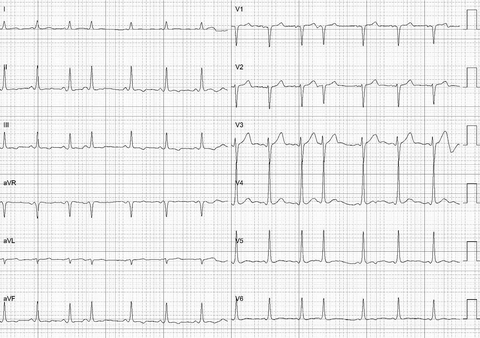Palpitation case study one
Jump to navigation
Jump to search
|
Palpitation Microchapters |
|
Diagnosis |
|---|
|
Treatment |
|
Case Studies |
|
Palpitation case study one On the Web |
|
American Roentgen Ray Society Images of Palpitation case study one |
|
Risk calculators and risk factors for Palpitation case study one |
Associate Editor(s)-in-Chief: Akash Daswaney, M.B.B.S[1]
Overview
A young man presented with isolated palpitations. An ECG showed sinus rhythm with preventricular excitation. Physical examination and echocardiography revealed no positive findings. An electrophysiology study eventually revealed the presence of a fasiculoventricular pathway.
Case study
- A young man presented with isolated palpitations. *An ECG showed sinus rhythm with ventricular pre-excitation. "Isolated palpitations and ventricular pre‐excitation - Arias - 2020 - Journal of Arrhythmia - Wiley Online Library".
- Physical examination and echocardiography revealed no positive findings.
- The presence of a positive delta wave in V5 and V6 and a negative wave in V1, raised suspicion for the presence of an accessory pathway.
- A fasiculoventricular accessory pathway is an atypical pathway that connects either the Bundle of His or the fascicles with the ventricular myocardium and the anteroseptal region.
- In the absence of structural heart disease, fasiculoventricular accessory pathways usually present in normal sinus rhythm and the pre-excitation would be minimal.
- An electrophysiology study eventually confirmed the diagnosis.
